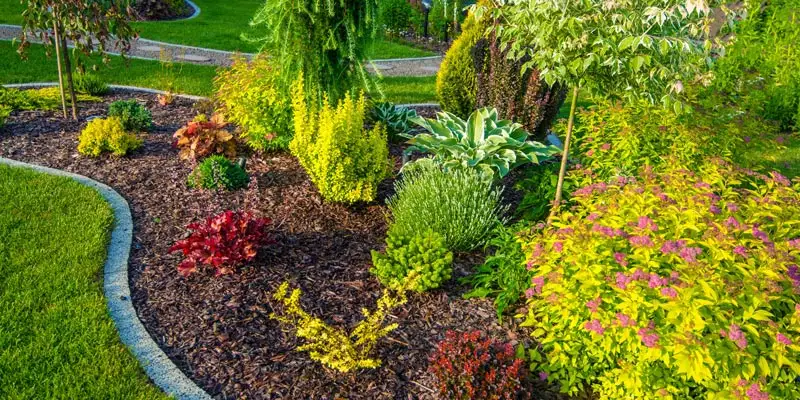The Best Strategy To Use For Landscape Design
Table of ContentsWhat Does Landscape Design Mean?Not known Facts About Landscape DesignLandscape Design Can Be Fun For EveryoneThings about Landscape DesignGetting The Landscape Design To Work
A lawn can generally be separated right into 3 areas: public (the front yard), exclusive (the back lawn), and solution (normally the side lawn). The place of activity areas depends mainly on the kind of location, the dimension of area needed, the kind of task, and the preferred proximity to various other activities and frameworks.The outside wall surface of the home usually functions as the very first wall surface or starting point of an outdoor space. Incompatible usages ought to be separated, and relevant activities, such as food preparation and eating, ought to be created to make the backyard extra effective and pleasurable. When making use of hardscape to develop areas, utilize construction material similar to that made use of in the home for connection from your home right into the garden.
Linked areas. Credit Scores: Gail Hansen, UF/IFAS Using comparable hardscape attributes and duplicating plants draws the eye around the garden.
A Biased View of Landscape Design

For psychological convenience plants are made use of as physical or implied obstacles for privacy and safety. Physical barriers block both the view and access to a space and consist of fencings, wall surfaces and plant bushes. Suggested barriers, typically low growing plants, block access but not the view (Number 9). Various other functions of plants consist of cleansing the air, preventing erosion and soil loss, keeping moisture in the soil, and returning natural issue to the soil.
Physical and suggested barriers. Credit Rating: Gail Hansen, UF/IFAS For these factors, the kinds of plants to be used (such as trees, shrubs, or groundcovers) should be selected in the onset of planning (Landscape Design). Plant kinds are selected for their functional capacities to ensure that their future purpose and called for area can be considered at the very same time

See This Report about Landscape Design
Each plant mass is in front of, behind, or alongside, one more mass. Figure 11. Straight plant layers. Credit Score: Gail Hansen, UF/IFAS Figure 12. Vertical plant layers. Landscape Design. Credit: Gail Hansen, UF/IFAS Repeating plants within a mass and duplicating masses with similar plants ties the garden with each other. The private plant characteristics need to be taken into consideration to successfully layer and mass plants.
All plant make-ups begin with the major framework plants, the large, mostly evergreen history plants-such as the trees and large bushes. These plants separate or enframe areas, control the dimension of the area, and supply the starting point for choosing the proper attributes of the 2nd layer, midground plants, for massing and infill.
Essential factors in the garden ought to be highlighted by the use of distinct plants, distinctive frameworks, or yard ornaments. Marking limits or entrances to spaces can be done browse this site with gates, arbors, and actions, or via using special and vibrant plants. The type and/or style theme of the garden will certainly usually help determine the important factors and how they must be highlighted.
Other essential places in the backyard are focal points, which is used to visually arrange a landscaped area. The kind of centerpiece typically depends on the checking out viewpoint. Different perspectives or point of views can reveal various structures in the landscape that may call for a range of prime focus. Contrasting texture, shape, size and shade will capture and hold the eye.
Landscape Design - The Facts

Number 13. Plant types. Credit Rating: Gail Hansen, UF/IFAS After form, appearance is the next leading feature of a plant; crude, medium and more info here fine textures can be made use of for comparison and focus in the landscape. Kind and structure both trump shade in the garden for a lot of the year. Nevertheless, during certain periods, shade will be one of the most obvious quality of the garden.
The pleasant fragrance of plants, the audio of wind in the trees, the sound and texture of water, and the colors and structures of sculptures, pots and garden furnishings all add to the experience of the yard. One detail that is commonly neglected is the impact of light on the aesthetics of the plants.

Landscape Design for Beginners
It is necessary to recognize the ultimate mature dimension of plants so they can be put in Look At This the right location and spaced appropriately when they are set up. Giving plants area to grow is a difficulty since the usual fully grown dimension is commonly based upon optimal growing conditions and the ecological conditions of a site might create a plant to expand bigger or remain smaller.
Comments on “Landscape Design - An Overview”